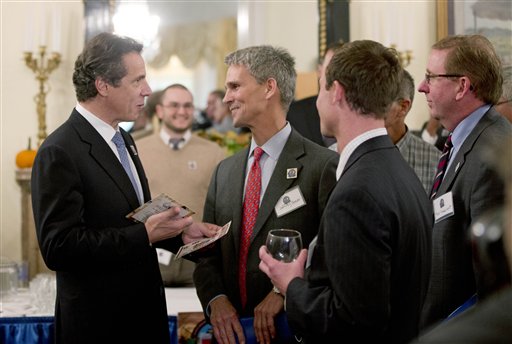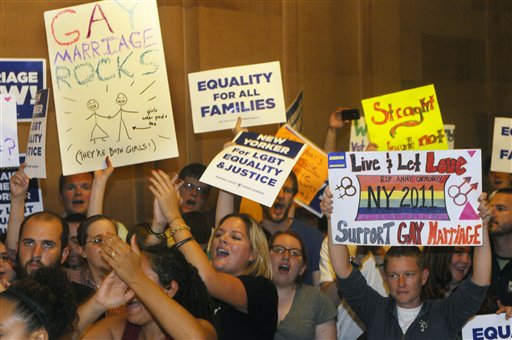Two long Island women. One from Suffolk, the other from Nassau. One a Republican, the other a Democrat. Rosalie Hanson of Gordon Heights and Laura Mallay of South Hempstead didn’t know each other when they first found the cause that would change their lives, but it was this cause—fighting special districts—that eventually brought them together.
Special districts are the lesser-known taxing entities that provide services such as water, fire protection and sanitation, for example, layered within the network of county, town and village municipalities. Nassau has more than 200 of them. As the Long Island Index, a nonprofit study funded each year by The Rauch Foundation, has pointed out, “Having so many separate taxing districts contributes to the high cost of living on Long Island.” With their own tax lines, these entities often operate like mini-fiefdoms hidden in the shadows.
As these women would discover, uncovering them is not easy; removing them is even harder. It’s a battle being waged throughout New York State, thanks to the recently enacted, attorney general-penned Citizen Empowerment Act, which enables residents fed up with exorbitant fees to simply dissolve the entities altogether. But even with this weapon, eliminating these costly entities is easier said than done, as the two unsuspecting friends would also soon find.
Hanson’s Suffolk community has the distinction of paying the highest fire district taxes on Long Island. Carved out of Coram, Middle Island, Yaphank and Medford, Gordon Heights has four zip codes for its 1.7 square miles but one fire district with an average household tax charge of $1,500, quadruple the amount of nearby areas. Back in 2006, a couple of Hanson’s friends went to a conference on Nassau County’s special tax districts held at Hofstra University, where they heard Laura Mallay speak about paying twice what her Nassau neighbors pay for garbage service.
The conference was the brain child of then-Nassau Comptroller Howard Weitzman, whose office the year before had audited five sanitary districts in three towns.
“Everyone needs garbage collected, clean drinking water and fire protection,” Weitzman said at the time. “But Nassau residents can pay two or three times as much for the same service depending on the district in which they live. Our audits unveiled millions of dollars of waste by some special districts, and a general lack of accountability, transparency and oversight.”
Speaking to the Press while vacationing recently in the Canadian Rockies after overcoming a serious illness that hindered his re-election campaign last year, Weitzman summarized his studies: “We found that the taxpayers in the garbage districts in the Town of Hempstead could save approximately $20 million if their garbage costs were reduced to the garbage costs of the town,” he says.
Taking on special districts was far from Laura Mallay’s mind eight years ago when she was talking to a friend on the phone and looked out her kitchen window as a man leaped into her backyard and tried to steal one of her kids’ bicycles. “I was fit to be tied,” recalls the mother of five (she had only three children back then). She hung up and confronted the man. “He tells me, ‘These people are chasing me!’” She told him that the police would help him, and she called 911. It turned out the people chasing him were the police. The man had just invaded a nearby home and was on the run. “The guy had a gun! Who knew?” But it’s that kind of indomitable spirit that typifies Mallay even today.

Garbage trucks from sanitary district No. 2 line up across the street from the Baldwin Fire Dept. (below)
Trial By Fire
Those heroics impressed Mallay’s husband James, an electrician, and garnered support from her neighbors, who encouraged her to rekindle her block’s dormant civic association. Naturally, their biggest issue was their property taxes. And that interest led them to then-Nassau County Assessor Harvey Levinson, who had begun looking closely at the county’s taxing districts, particularly the South Hempstead Fire District and the Town of Hempstead Sanitary District No. 2, which he found charged more than similar districts. In the case of fire taxes, Levinson told the Press recently from his home in Florida, Mallay’s community was paying a tax rate of $46 while Manhasset was paying only $9.
“It’s $543 for garbage tax in Laura Mallay’s area,” Levinson says, “and if she lived in Merrick, she’d be paying $263.”
Mallay invited Levinson to talk about special tax districts at a town hall meeting in March 2005 at the elementary school with her group and two other civic associations from Baldwin Oaks and Birchwood, all three in the same sanitation and fire districts.
“The auditorium was packed to the brim,” Levinson recalls. “And what was parked outside? A big fire truck! And they had brought in firemen from Albany in full-dress uniform to picket me! That meeting got to be very, very tense because they were convinced I was trying to close the fire district.”
“They’re all in their gear, they’re all standing firm, and they’re not letting him speak,” Mallay says. “They’re yelling. It was crazy.”
For Mallay, it was a rude awakening. Although her father was active in the Nassau County Democratic Committee, she’d never realized how political fire departments can be. At the urging of the other civic association members, she decided to run for commissioner of her sanitation district.
“These mini-governments across Long Island are what is leading to these incredible taxes that we all pay,” Mallay tells the Press. “People have different feelings about fire, schools and water. But if you can’t fix garbage, you can’t fix any of it!”
The trash collectors see it differently.
“The vast majority of [the disparity in household fees] is the level of service and the assessment,” says Bob Noble, the secretary to the board of commissioners at Sanitary District No. 2, where he began working 31 years ago on the back of a garbage truck. “This special district has the lowest assessment. We have a very small commercial base in Baldwin and it’s non-existent in South Hempstead.”
Levison disagrees.









